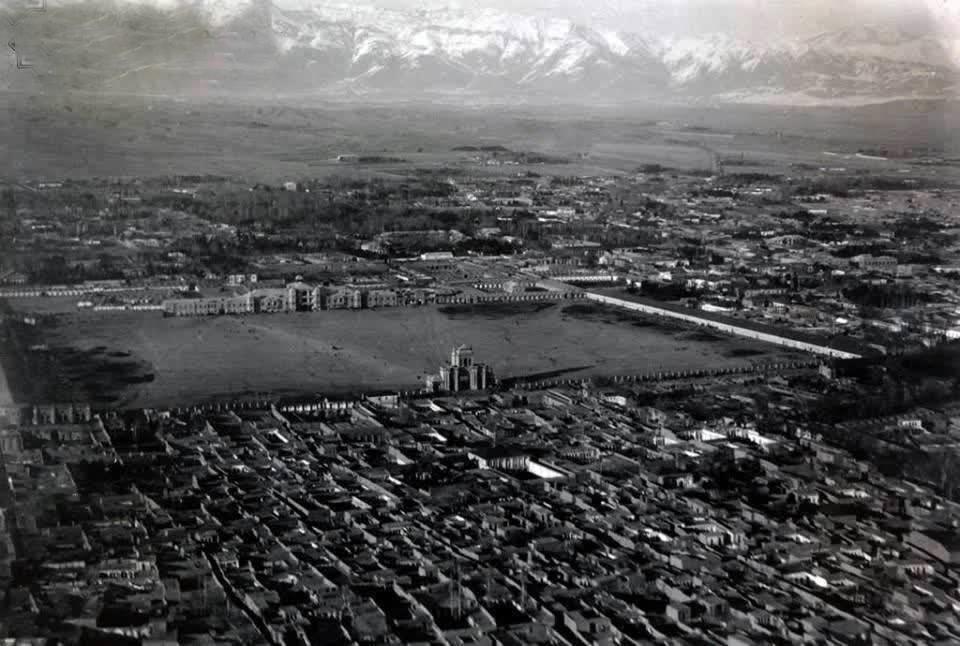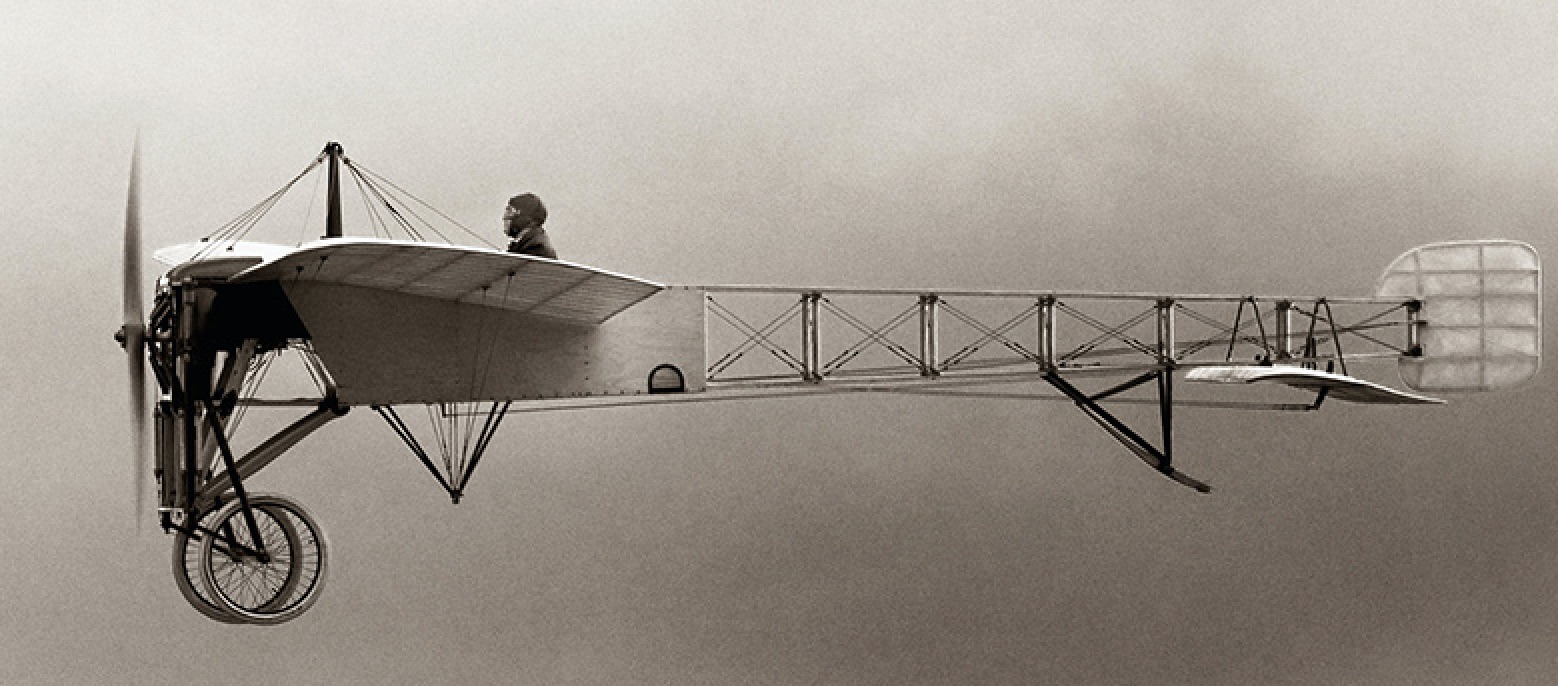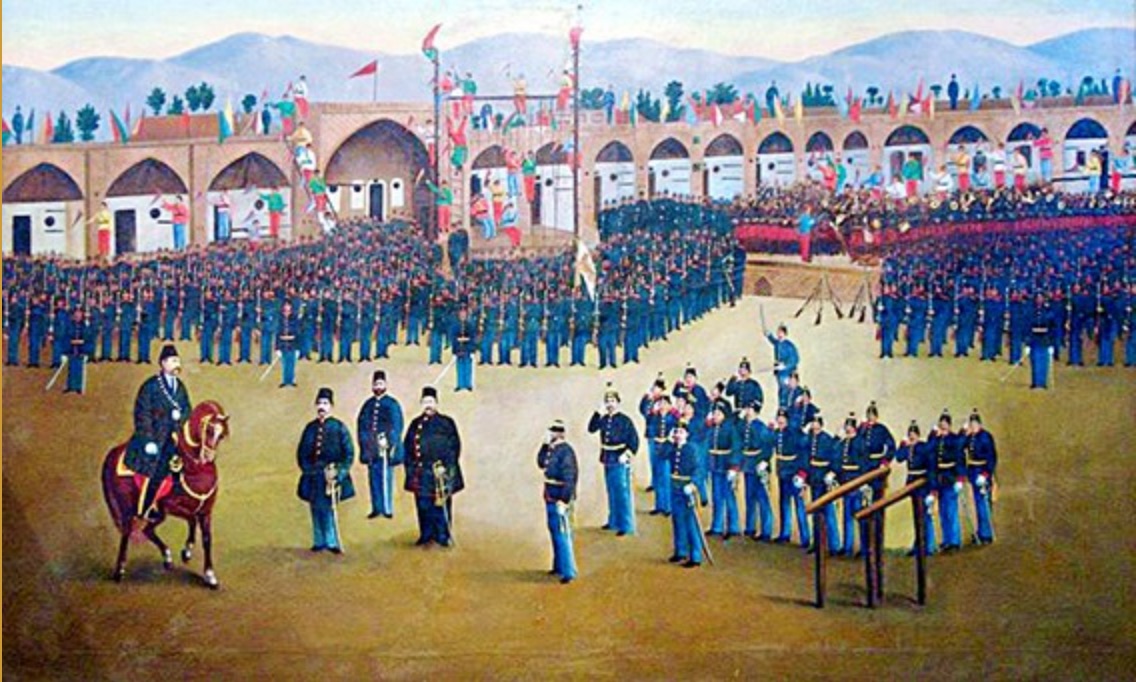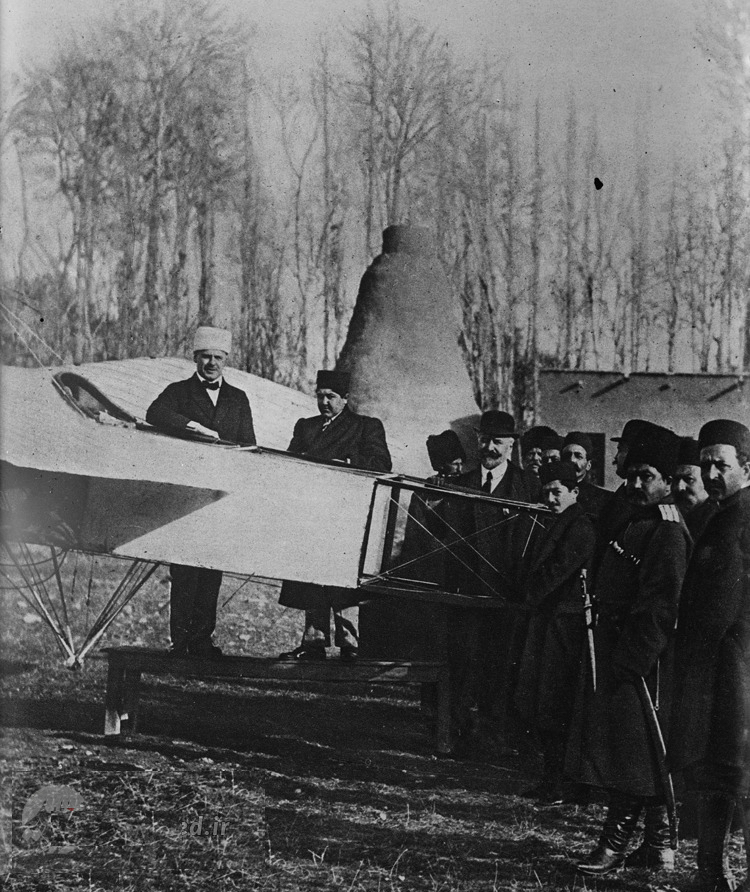Mankind’s first aerial flight was to take place on December 17, 1903 by the Wright brothers at Kitty Hawk in North Carolina, USA. With this technological leap, the world was to rapidly enter the domain of aviation.
On January 4, 1914, just over ten years after the flight at Kitty Hawk, the citizenry of Tehran witnessed the first flight of the airplane over Tehran. Caught unawares and never having seen an airplane before, many citizens rushed out of their houses and workplaces into the streets as they heard the roar of the aircraft’s engines as it flew at low level over Tehran’s rooftops. Tehran curious citizenry were struck with amazement as they witnessed what probably resembled a metallic bird in flight.

The first aerial photo taken of Tehran by a balloon approximately 90 years ago (Photo: Bartarinha) (for more on this see “First Balloon Flight over Tehran”). The pilot of the Berliot 1 that first took flight over Tehran on January 4, 1914 most likely witnessed a similar panorama as he flew over the city.
The pilot circled the city environs and soon decided to land his airplane.
While the nationality of the pilot is identified as “Russian” (Babaie, Gh.

A Russian copy of the French-designed Blériot XI known as the “Rossiya-B” (Source: Copycats Work). This Blériot XI was produced under license in Czarist Russia where it was Christened as the “Rossiya-B”. It was one of the Russian-manufactured Blériot’s that flew over Tehran.
As Tehran did not yet have an airfield per se, he decided to land his plane in the military grounds of the local barracks of the Meydan Masqh (میدان مشق) of the Persian Cossack Division (this was to subsequently become the location of the Iranian Ministry of Foreign Affairs, as it remains to the present). However, as the plane landed it collided with the barrel of an artillery piece parked in the grounds, damaging the aircraft. The pilot himself was unharmed. By this time, large crowds of excited and curious citizens forced themselves into the barracks, in hopes of getting a glimpse of this strange flying machine.

A color graphic of the Meydan Masqh (میدان مشق) as it would have appeared in the early twentieth century (Source: gt724).
The plane was actually unable to take off for a number of days as crowds from all across Tehran began pouring into the barracks. Equally of interest is arrival of the Blériot into Iran. Kuzminskii had bought this over into Iran in parts from Czarist Russia by way of the Caspian Sea into the northern Iranian port city of Bandar Anzali. From there, the plane was transported in kits (or sections) by automobile from northern Iran to Tehran. Once Kuzminskii arrived in Tehran, he re-assembled the airplane and took off to the city’s skies on January 4, 1914. The flight certainly did not go unnoticed by Iran’s ruling class. The very next day, the Qajar monarch, Ahmad Shah (r. 1909-1925) alongside his retinue, various government officials and high-ranking military personnel arrived at the barracks to inspect the plane and welcome its pilot.

Ahmad Shah (r. 1909-1925) (2nd from left), the last Qajar monarch of Iran, poses in front of the Blériot aircraft and its Polish pilot identified as “Kuzminskii” (at left with white Persian cap) on January 5th, 1914 (Source: Maboubeh Pouryusefi [محبوبه پوریوسفی] in Fararu). Note the attendance of Ahmad Shah’s retinue alongside members of the Persian Cossack Division (Source: Fararu). The photo, according to Maboubeh Pouryusefi of the Fararu outlet, was first published in the French “L’Illustration” newspaper. Just over seven months after the Berliot 1’s flight over Tehran, the world would be plunged into the First World War on July 28, 1914.
Local hucksters were quick to seize the aircraft’s presence to sell tickets at exorbitant prices. However, as the plane was damaged it was unable to take off. Assisted by Iranian military personnel, Kuzminskii succeeded in transporting the aircraft to Tehran’s military repair headquarters which often overhauled and rebuilt military hardware such as artillery, etc. The location of this repair depot has been identified as Third Esfand street (خیابان سوم اسفند). Kuzminskki, who had engineering training, was assisted by an Iranian officer identified as Oshtodagh (اشتوداخ) who was the father of Major-General Issa Oshtodagh (تیمسار سرلشکر عیسی اشتوداخ). With the plane repaired, Kuzminskii then transferred this back to Meydan Masqh (میدان مشق). However, he subsequently decided that it was too dangerous to attempt a take-off from Meydan Masqh (میدان مشق). As a result, he decided to relocate the plane by land transport to a locale known as the “Qajar Palace” (قصر قاجار). This area featured a level ground which was suitable for take-off and landings. From this area Kuzminskii made a number of other flights over Tehran.
Maboubeh Pouryusefi [محبوبه پوریوسفی] however notes in the Fararu outlet that the plane crashed and that parts of this soon appeared on a horse-drawn wagon as it ambled down Tehran’s Ala-Dowleh street (خیابان علاءالدوله), which is present-day Firdowsi street (خیابان فردوسی). Pouryusefi notes that the wagon traveled towards Tehran’s Meydan Toopkhaneh (میدان توپخانه) district. This version of events however is not corroborated by Iranian aviation historian Babaie (Babaie, Gh. [1383/2004, Tehran: Entesharat Ashian], “History of the Iranian Air Force”).
It would not be until 1922 when Iran’s first airfields were to be developed. The first airfield was to be built in the south of Tehran. Just two years later in 1924, the foundations of Iran’s civil and military aviation would be established.



